
4 min read
How To…Design a Restorative Bedroom
Discover WLLW's strategies to design a bedroom that supports restorative sleep and overall physical and mental wellbeing.
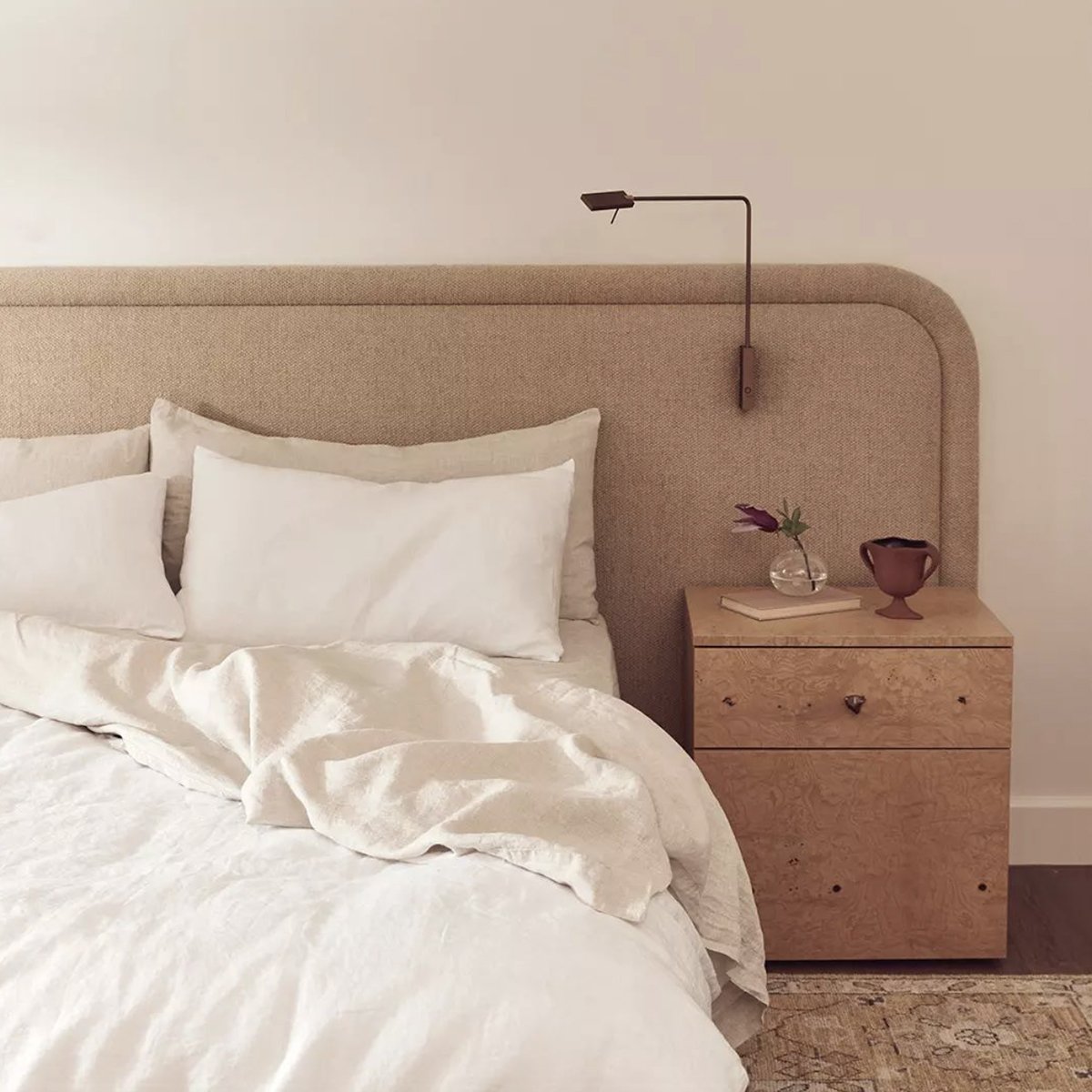
4 min read
WLLW investigates four healthy and environmentally friendly bed linen options for a better night's sleep.
According to the National Institutes of Health (NIH), adequate sleep—defined as seven hours or more—is crucial for optimal brain function and mood, and reduces the risk of numerous chronic conditions, including heart disease, stroke, obesity and dementia. The design of our bedrooms is critical to this end, with factors like lighting that supports our circadian rhythms and the use of non-toxic mattresses playing significant roles. Moreover, natural bed linens are increasingly recognized for their contribution to overall wellbeing. In contrast, conventional bedding often contains synthetics and chemicals that can be detrimental to both personal health and the environment.
In the pursuit of healthier living, WLLW has investigated four different types of bed linens that promote both health and sustainability.
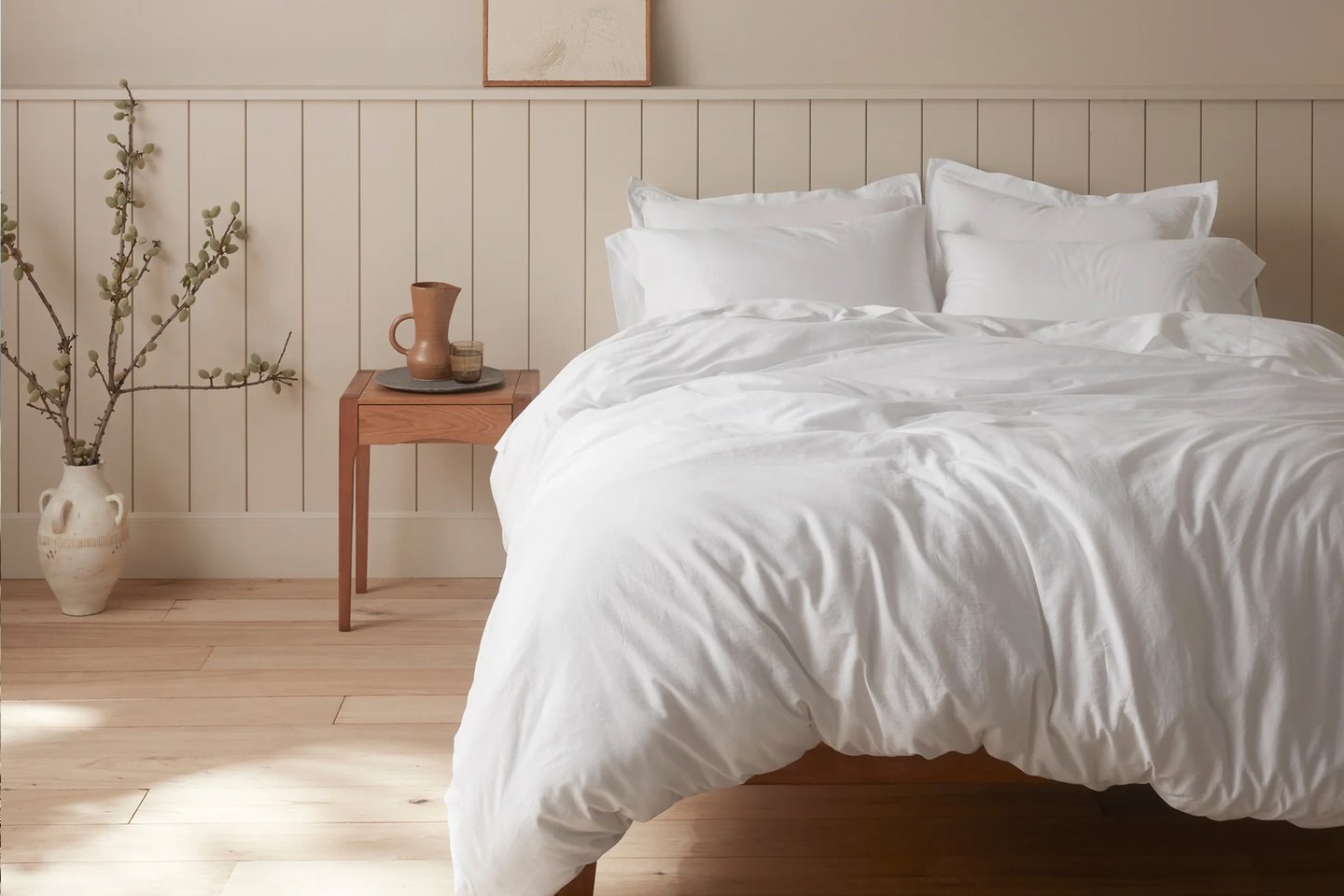
Cotton is a natural fiber that has been used to produce textiles for thousands of years. Organic cotton is cultivated without the use of synthetic pesticides or fertilizers. Brands like Aizome, offer Global Organic Textile Standard (GOTS) certified organic cotton bed linens, guaranteeing environmental responsibility as well as fair and ethical treatment of the workers involved in its production.
Organic cotton, in particular, does not contain toxic bleach or harsh dyes that cause skin irritations or allergies, making it beneficial for people with sensitive skin.
Conventional cotton is one of the world's most heavily sprayed, pesticide-laden crops. Organic cotton must be grown on a farm that is certified by a government-controlled organic standard. In addition, voluntary standards like GOTS ensure environmental responsibility along the supply chain.
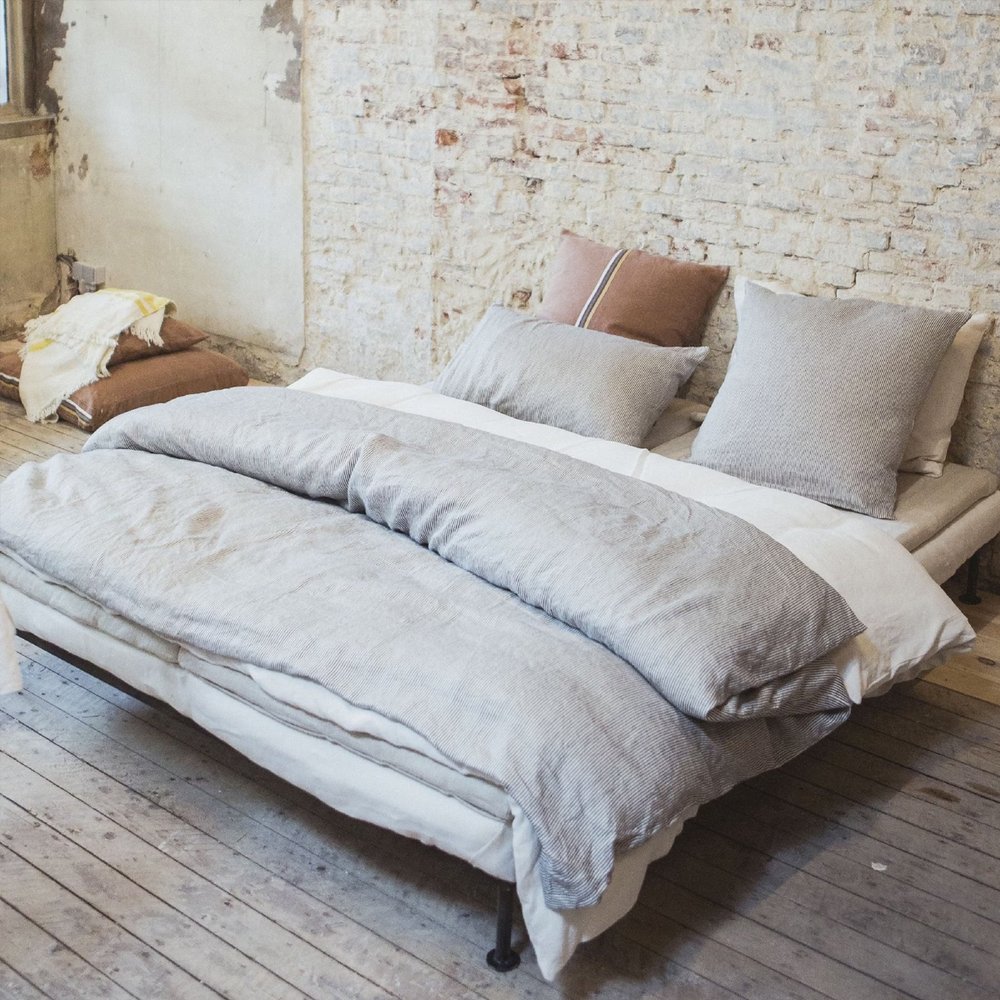

Linen, crafted from flax plant fibers and regarded as humanity's oldest used textile, is exemplified by Libeco's and Cultiver's collections, boasting GOTS and OEKO-TEX certifications respectively. Sourced from the flax fields of Belgium and France, particularly the fertile Flanders region, where the temperate Atlantic climate fosters the growth of tall flax plants, yielding the long fibers crucial for high-quality linen.
Linen bedding is known for its breathability and high absorbency, which can help regulate body temperature and promote better sleep quality – especially in hotter climates. Studies have found that sleeping on linen can lead to deeper sleep and a better mood upon waking. Linen also has natural anti-microbial and anti-allergenic properties, making it an ideal choice for people with sensitive skin or allergies.
The Made-By Environmental Benchmark for Fibers gives organic linen an ‘A’ as a preferred fiber with less harmful environmental impact compared to alternatives like conventional linen, hemp and bamboo. Flax is a fast-growing renewable resource that often comes close to the organic standard without intervention due to its reduced need for pesticides and fertilizers.
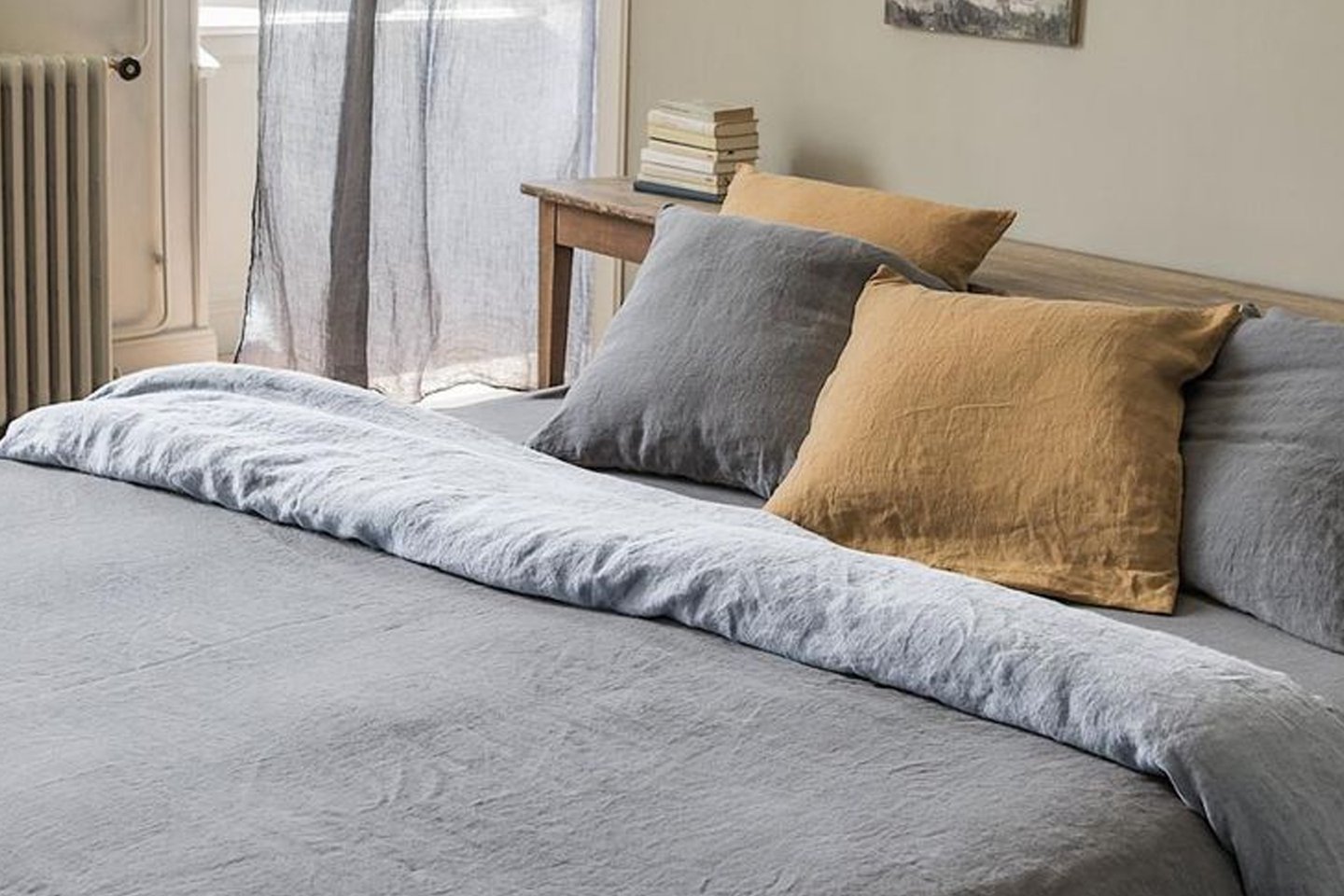
Hemp, one of the first fiber plants to be cultivated, has a long history of versatile use, with textile origins dating back to approximately 8,000 B.C. Brands such as Casa Parini offer lightweight, breathable hemp bed linen that is free from harmful chemicals.
Hemp fabric is known for its breathability and moisture-wicking properties, which can help regulate body temperature, keeping you cool in the summer and warm in the winter. It is also antimicrobial, inhibiting the growth of bacteria, which makes it beneficial for overall skin health.
Organic hemp has been widely studied as a sustainable, low-impact crop that can be responsibly converted into fabric. It is a renewable fiber with quick harvest turnarounds, grows well in various climates and does not require chemical pesticides or fertilizers to grow.

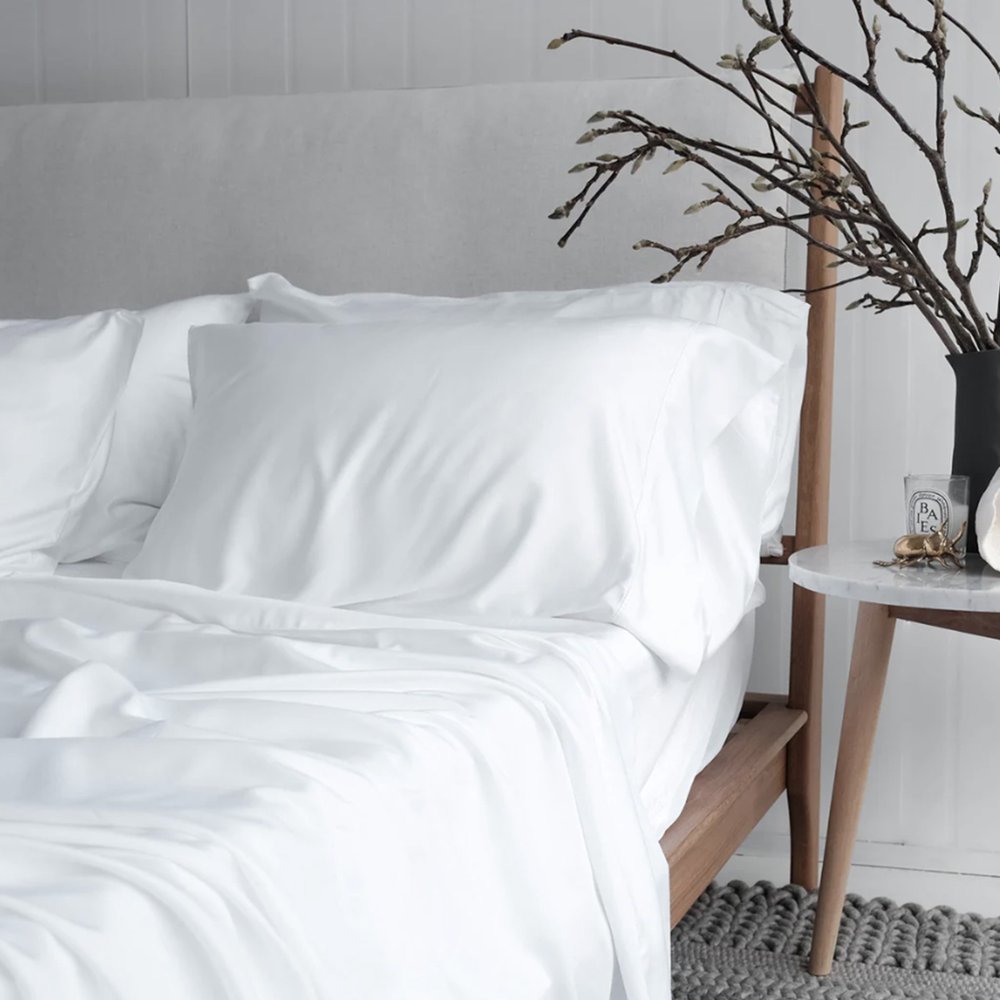
Lyocell, also recognized as eucalyptus silk or TENCEL, is crafted from the wood pulp of eucalyptus trees and may include materials from oak, bamboo, and birch. This man-made, regenerated cellulosic fiber is known for its versatility and eco-friendly production process. Eucalyptus Home TENCEL Lyocell sheets exemplify this with their soft, pampering feel, coupled with thermal regulating and moisture management properties, making them a luxurious and functional choice for bedding.
Lyocell is known for its delicate softness and comfort. It is hypoallergenic and has double the moisture-wicking capabilities of cotton. Those with sensitive skin reported a significant preference for Lyocell over cotton for its softness, temperature and moisture control.
Lyocell is highly sustainable as it is 100 percent cellulose, therefore it is fully biodegradable and compostable when not blended with other synthetic fibers. Eucalyptus trees, in particular, can grow quickly with minimal pesticides and without irrigation and use land not fit for food crops. Its production also utilizes a closed-loop system where its byproducts are infinitely reused.

Viscose, derived from plant materials like bamboo, pine, or eucalyptus trees, is favored for its silk-like feel and affordability. The production process, however, often involves hazardous chemicals that pose health risks to workers and lead to pollution in surrounding communities. Closed-loop processes, which produce viscose from responsibly managed forestry, heighten its sustainability. Organizations like the Canadian non-profit Canopy are advocating for these improvements, ensuring transparency and the prevention of sourcing from ancient or endangered forests.
The softness and hypoallergenic nature of bamboo bedding is especially appealing for those with allergies, and its moisture-wicking capability contributes to sleep comfort. Bamboo's rapid growth and low water requirements contribute to its eco-friendly reputation. Yet, the environmental advantages are frequently negated by monoculture farming's drawbacks, biodiversity loss, and substantial carbon emissions from global transportation. The widespread use of chemicals in converting bamboo to viscose or rayon—most bamboo fabrics are produced through such chemical processes—elicits significant health and ecological concerns.
Marketing buzzwords such as anti-static, easy-care and wrinkle-free can mask finishes that utilize chemicals like formaldehyde, a known carcinogen. These buzzwords can create a perception of value and quality but don't necessarily reflect the environmental or health impacts associated with the production processes. Instead, look for organic textiles that are untreated and, if possible, sourced and produced locally. Look for the GOTS (Global Organic Textile Standard), OEKO-TEX, or Textile Exchange’s OCS (Organic Content Standard) for third-party vetting.
Feature Image: Cultiver
Photography: Coyuchi, Libeco, Eucalyptus Home, Couleur Chanvre, Cultiver

4 min read
Discover WLLW's strategies to design a bedroom that supports restorative sleep and overall physical and mental wellbeing.

7 min read
Find out what's concealed in your bedroom by uncovering the hidden toxins in the finishes and furniture, and learn how to create a healthy space to rest and recharge.